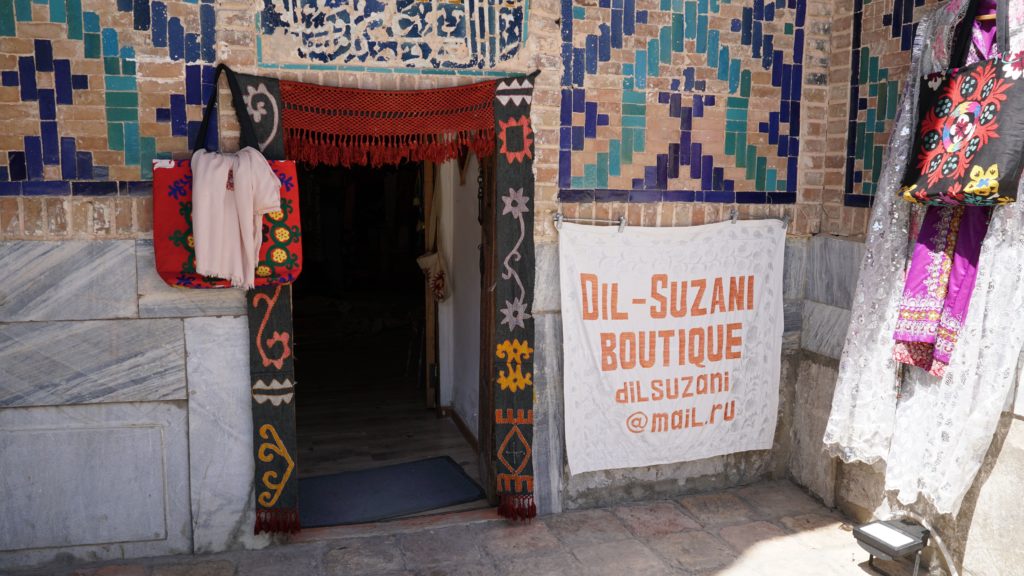I have to admit this country wasn’t on my bucket list. For sure, I had heard of it before from the media, but mostly in the context of political repression, censorship, and sometimes also its cultural heritage stemming from the former silk road. But I didn’t even know where to locate Uzbekistan on the map when an email caught my attention in early 2019, announcing a summer school on condensed matter physics and quantum technologies to be held in Samarkand.
About three months later, I am on my way to Tashkent, the capital of Uzbekistan and the largest city in Central Asia, quite excited, as this was going to be my first time in a foreign country where English is not an official language. I had been preparing myself several weeks in advance, organizing my travels, learning some words of Russian from the Russland Journal Podcast, and, of course, looking up the agenda and preparing for the summer school I was going to attend.
Tashkent with Locals
After the death of Islam Karimov in 2016, the much-acclaimed first President of Uzbekistan, the country has opened up a lot under the presidency of the (seemingly far less known) second president Shavkat Mirziyoyev. After abolishing visa requirements for many Asian countries in 2018, since January 2019 also German nationals can enter Uzbekistan as a tourist for up to 30 days. Since then, not only the number of tourists has increased multiple times, but also policy got more amenable towards tourism, for example, by lifting the photography ban for the Tashkent subway system.
Due to my flight’s schedule, I arrived two days earlier than the actual start of the summer school, and together with several other participants, we got picked up from the airport and were brought to a hotel on the city’s outer rim. To my surprise, the organizers had arranged an entire day program, showing us around the main sights of Tashkent, including Ko’kaldosh Madrasasi and Chorsu Market, eating traditional plov at the Plov Center, enjoying views from Tashkent tower, and finally visiting the flower festival in the city center.
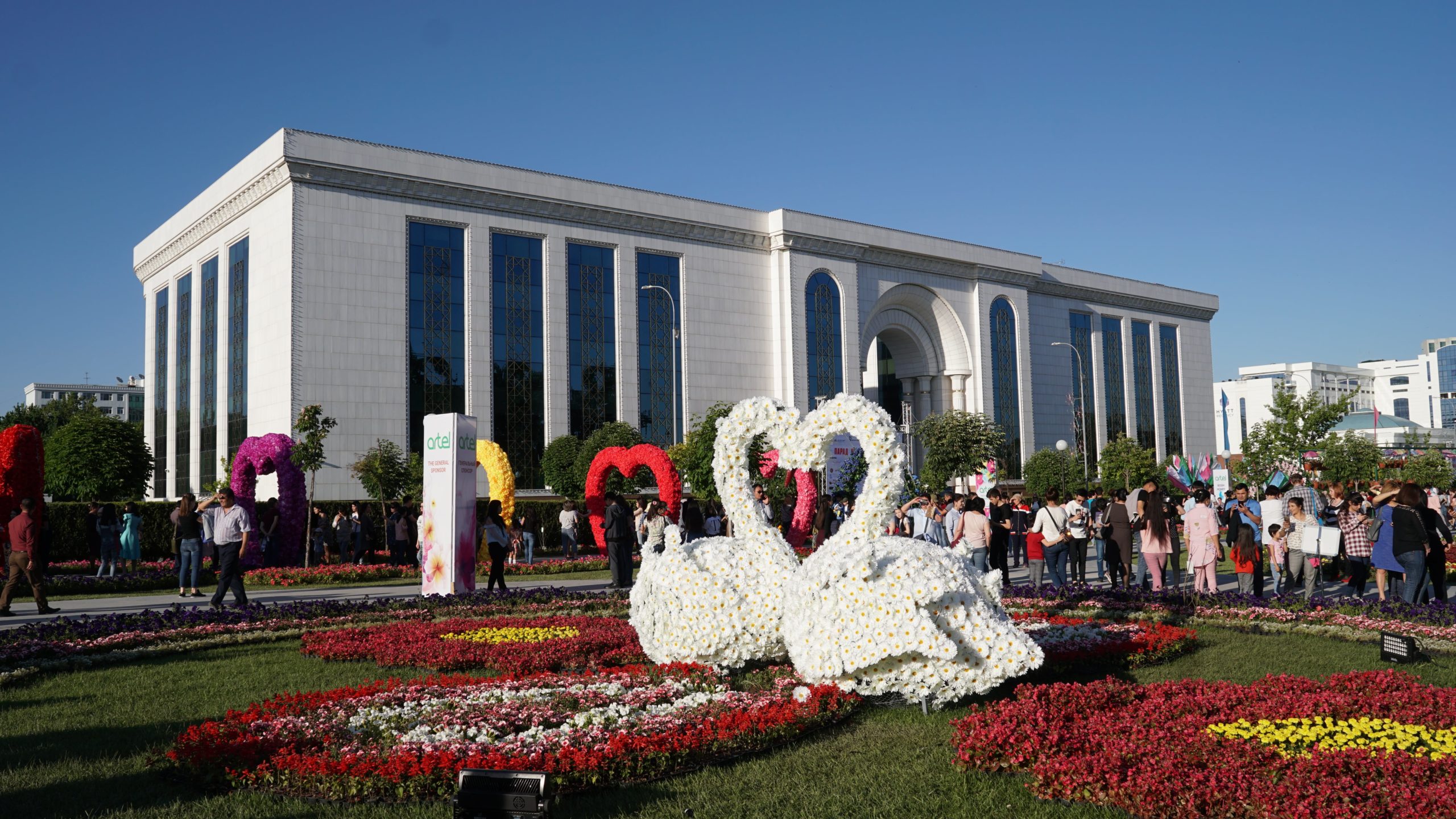
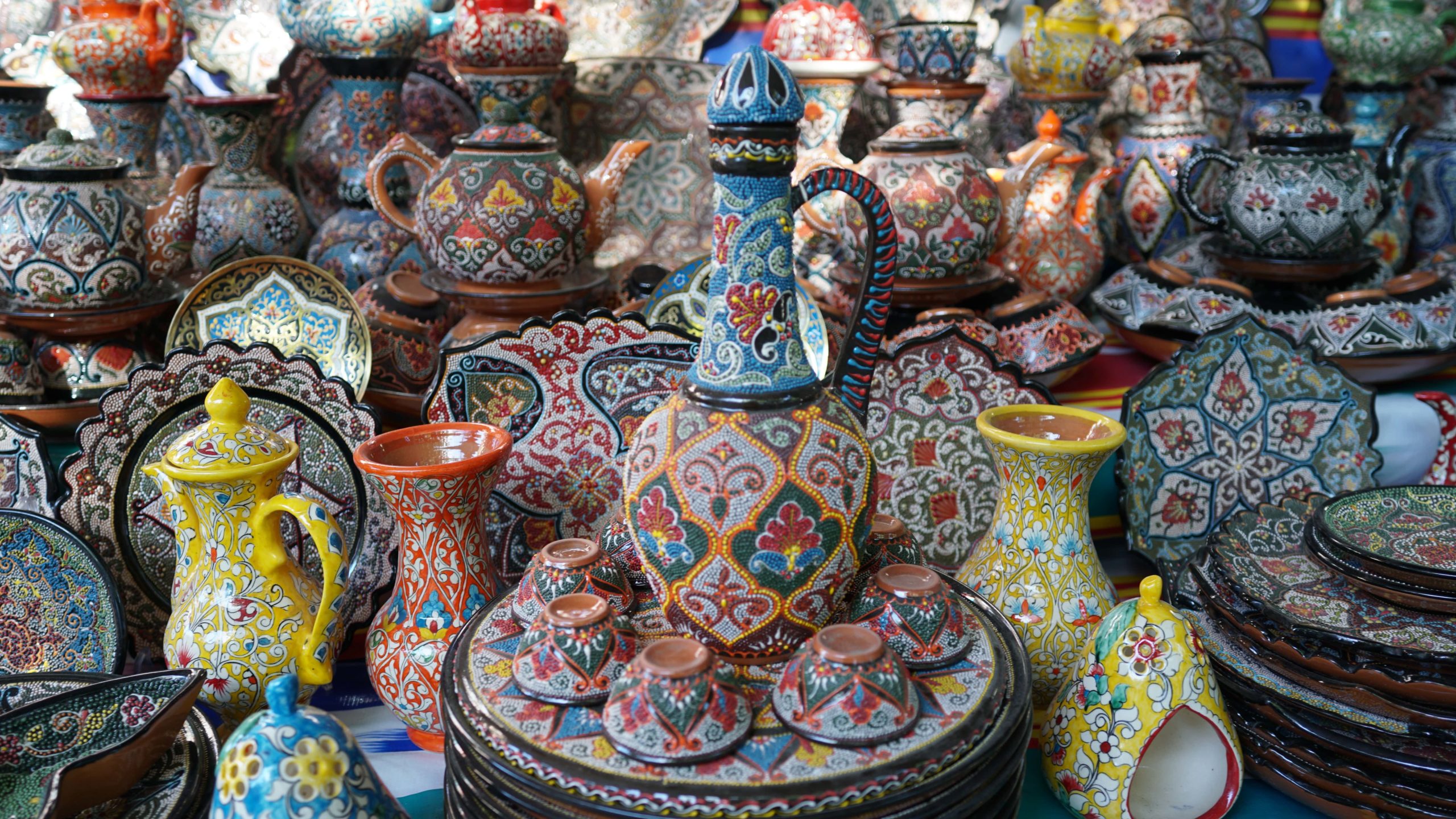



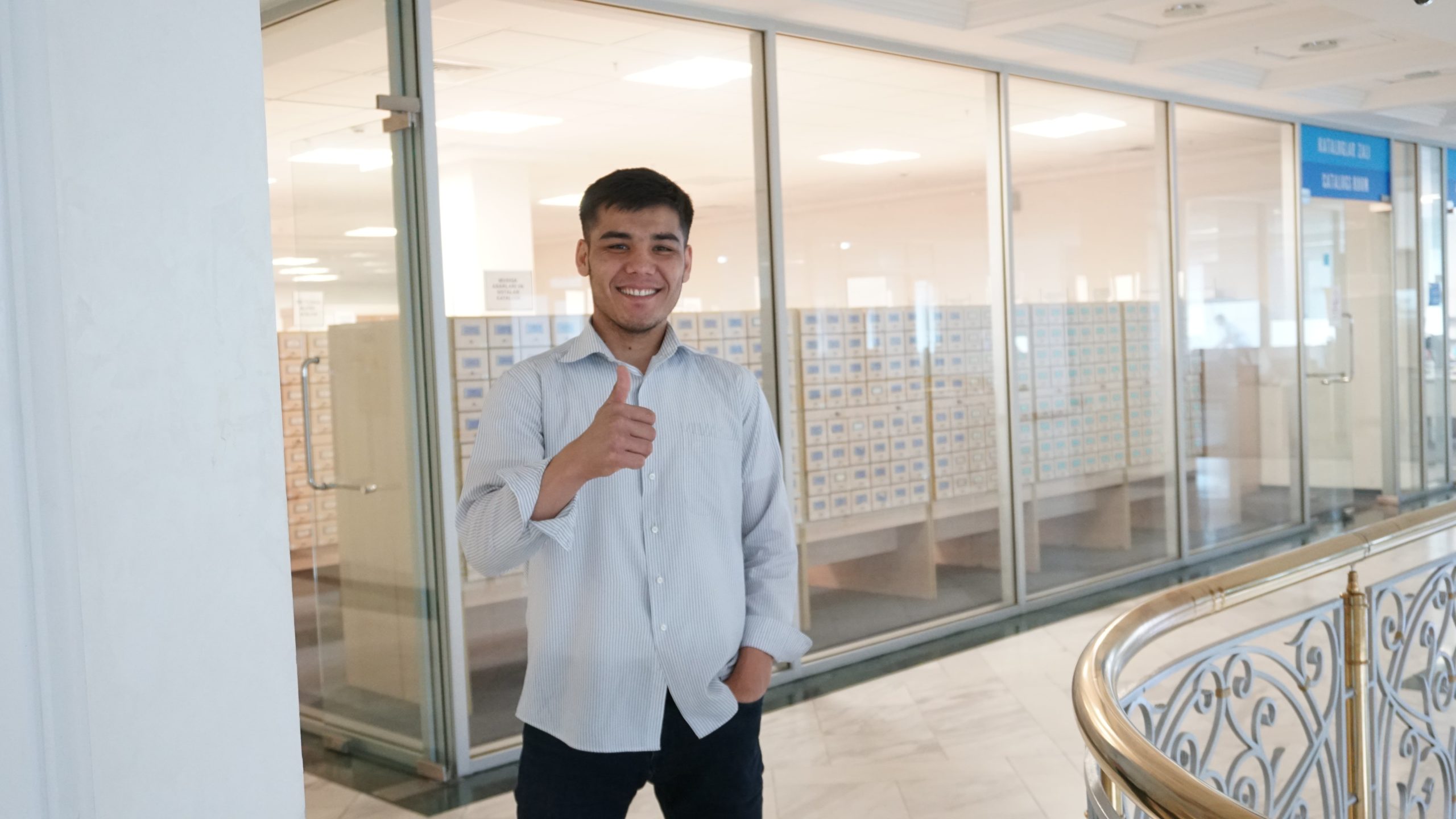

My first impression of Tashkent was simply amazing! I was deeply impressed by the interplay of cultural heritage and modern architecture, the friendliness of the people, and the beautiful flower arrangements that were on display. While traffic was more like what I had expected from an “underdeveloped country,” a bustling chaos of cars going anywhere, the ATM’s didn’t work everywhere, and the countryside is yet a whole different story, which I’ll touch upon later, my overall first impression was far better than expected. Surprisingly many international brands were present, with the same Samsung S10 advertisement as in Germany displayed on large-scale billboards.
While the other participants and the organizers were off to Samarkand the second day already in the morning, I spent that day in Tashkent just on my own. Lacking both a guide and internet, I made my way by taxi to the National Library of Uzbekistan, hoping to find at least some internet. After going through passport control and an airport-level security check, I was allowed to enter the library building. None of the libraries’ staff was into English, but I soon got handed over to a group of aspiring Uzbek students.
That’s where I met Dilmurod, studying for the IELTS exam, working on his own education startup idea, and happily taking the chance to speak English with some random stranger walking into the library. So by mere luck, I suddenly had a guide, showing me around the library building and also the city center, passing by the Ministry of Finance (such an impressive building!), the Islam Karimov Museum (closed at that time), and the Humo Ice Dome. Many thanks, Dilmurod; we’ll keep in touch, my dear friend!
Finally, I took the Afrosiyob from Tashkent to Samarkand in the evening, a high-speed railway reaching top speeds of up to 250 km/h. I was facing the same airport-style security check at Tashkent central station, which seemed so backward, like from a time before the information age. But riding the Afrosiyob to Samarkand was a smooth experience — like flying on the ground and as cheap as going by plane.
The Madrasa and the Quantum
The summer school was about to begin the next day, and it was announced to be held at the main attraction of Samarkand: the Ulugh Beg Madrasa. But to our all surprise, it took place not in some building near the madrasa, but right inside the actual madrasa. This was so amazing: The summer school was held inside the actual historic madrasa! A steady rhythm filled the following days: breakfast at the hotel, lectures at the madrasa in the morning and afternoon, lots of time to explore the madrasa and Samarkand city during the lunch break, and joint dinners with all the attendees in the evening.
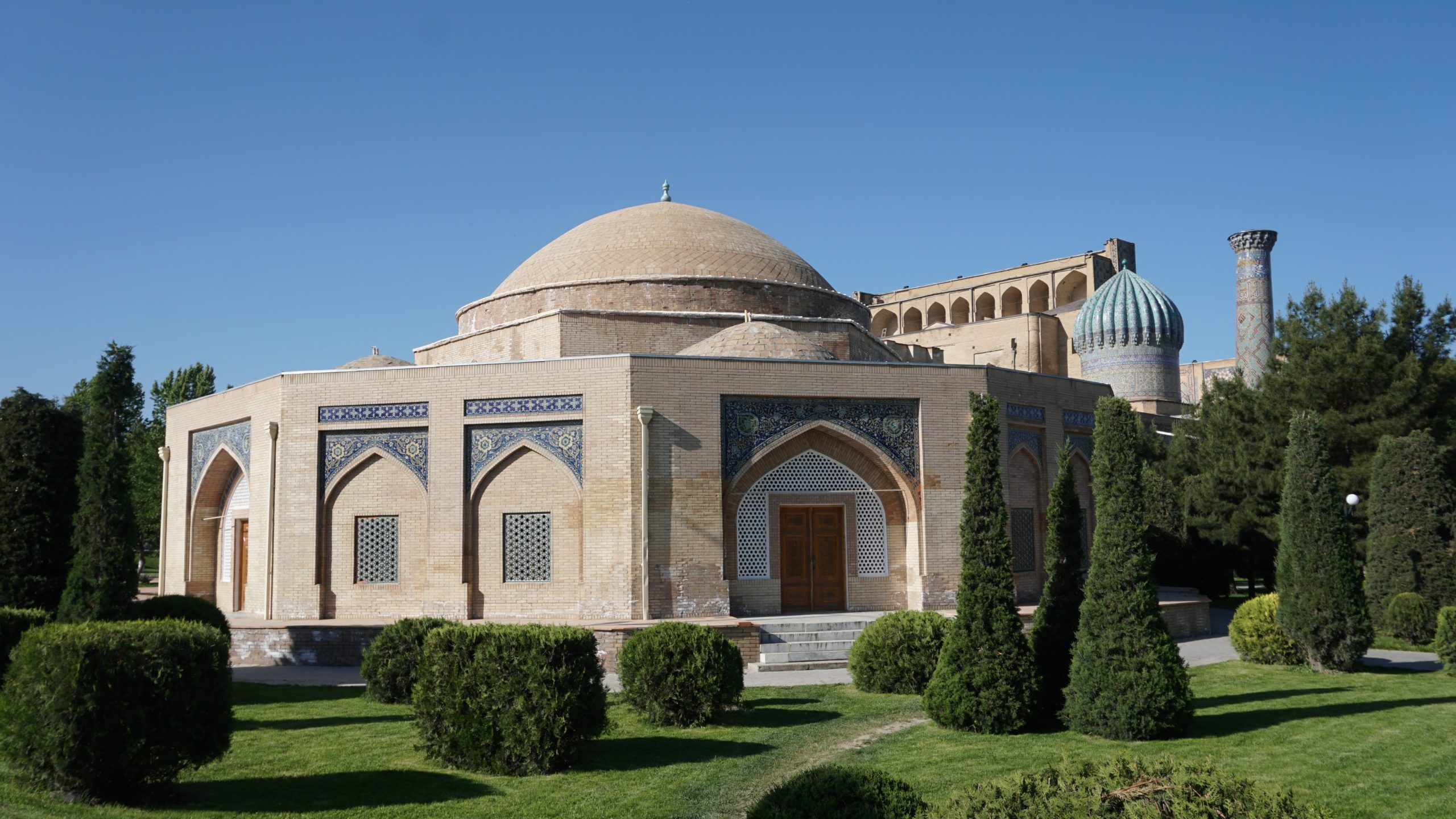


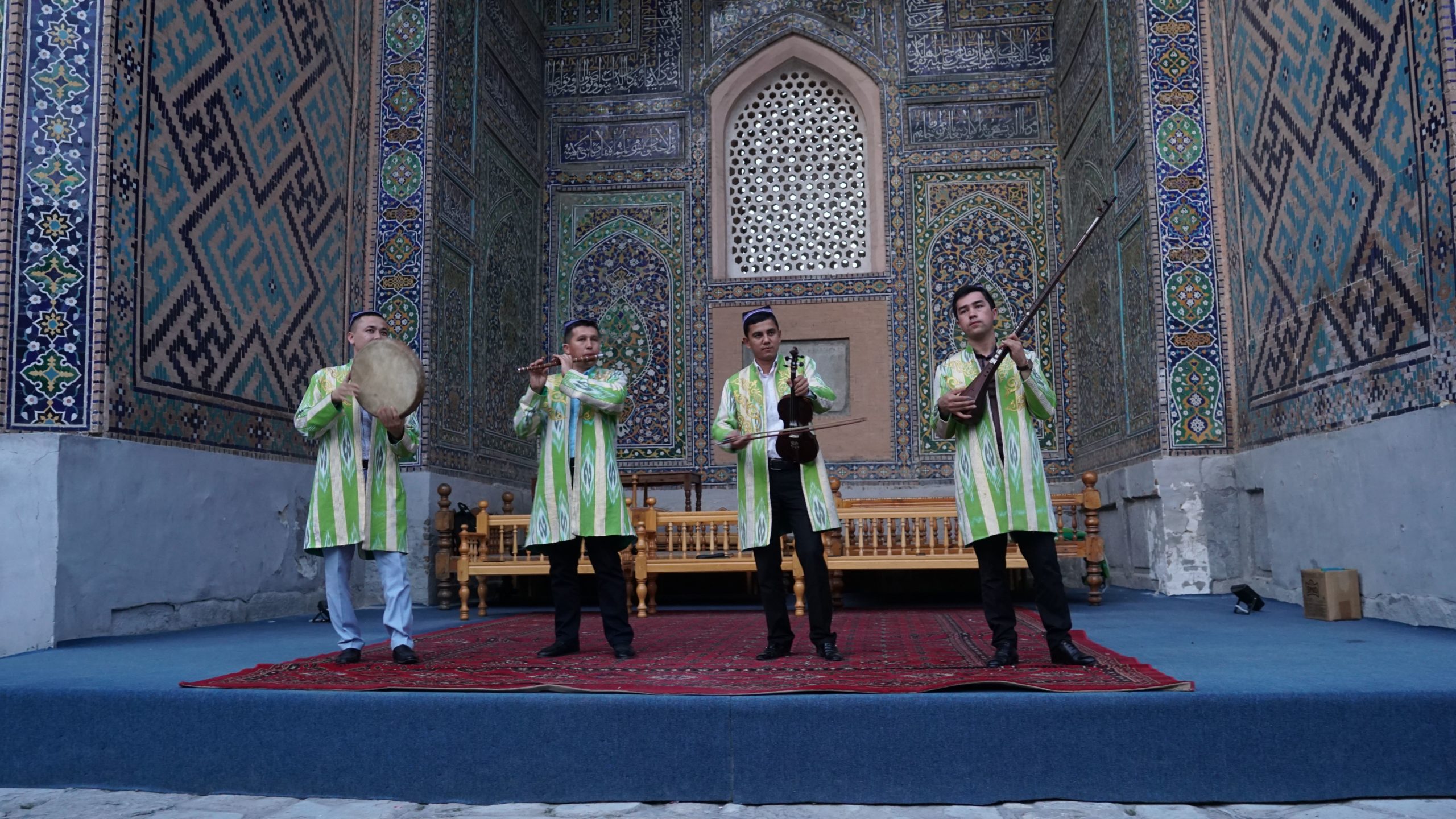

It was a great opportunity to meet and exchange with researchers working in condensed matter from all over the world. During the day, exotic, topological states of matter came to life during presentations inside the madrasa, and at noon and in the evening, we had time to dive into Uzbek culture, visit historical sites or just keep some time to ourselves for studying (or writing on my second book “Frühstudium”).
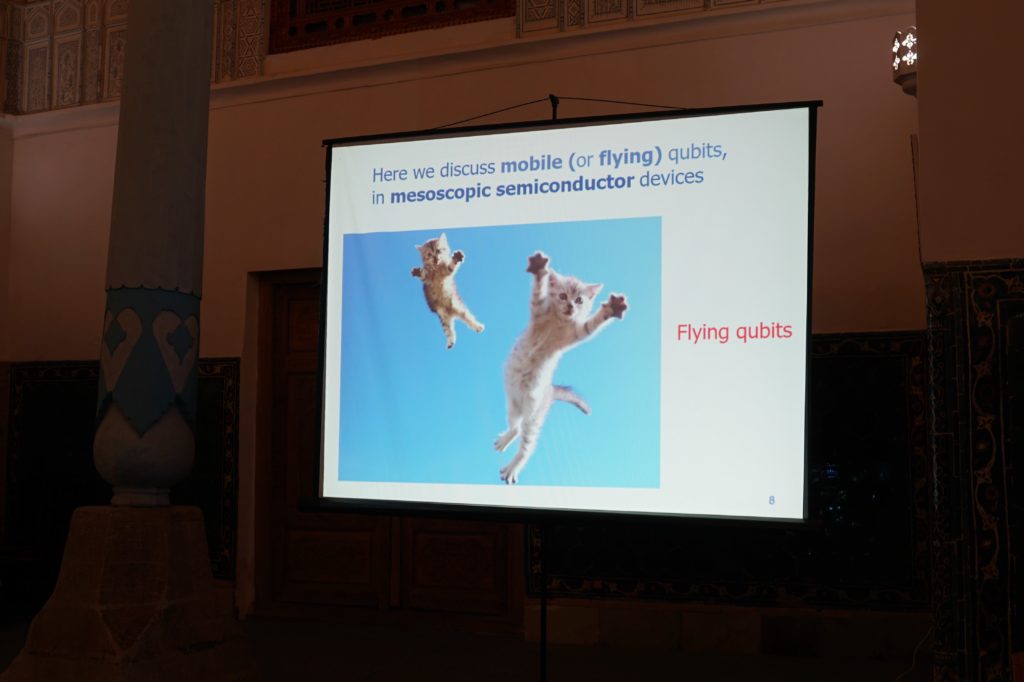
Cultural Restorations
As an interesting side note here, the Ulugh Beg Madrasa was at that time right in the process of restoration. Generally, I like the idea of restoring and reviving historical sites instead of leaving every single stone as is and waiting for the acid rain to dissolve it. It’s maybe not original in the sense that it has not been touched for a thousand years, but that way, one can more clearly relate to these ancient times and imagine what it would have been like. So at first, as a tourist, I was quite impressed by the restored madrasa: it just looked so beautiful.
Only later I learned that these restoration works were judged internationally as being largely unprofessional and replacing historical sites with copies. This is unfortunate, as a part of the historic spirit is lost. In some places, such as in Tashkent or Shahrisabz, restorations and “tourism development plans” went even as far as bulldozing entire sites and evicting people from their homes, which drew a lot of national and international criticism. It shows that Uzbek development plans are still more a matter of political taste rather than based on historical and scientific grounds.
Almost at the end of the summer school, we also made a day trip to Bukhara, another city of ancient beauty, several hours by bus apart from Samarkand. That way, we spent most of the day driving back and forth, with just a few hours left to explore Bukhara. Here, the process of restoration could be seen most clearly, with all of the historical sites making an artificially well-preserved impression and lots of hotels and restaurants just waiting for tourists to come. It was impressive, at least, as long as you didn’t leave the restored historical parts of the city center.
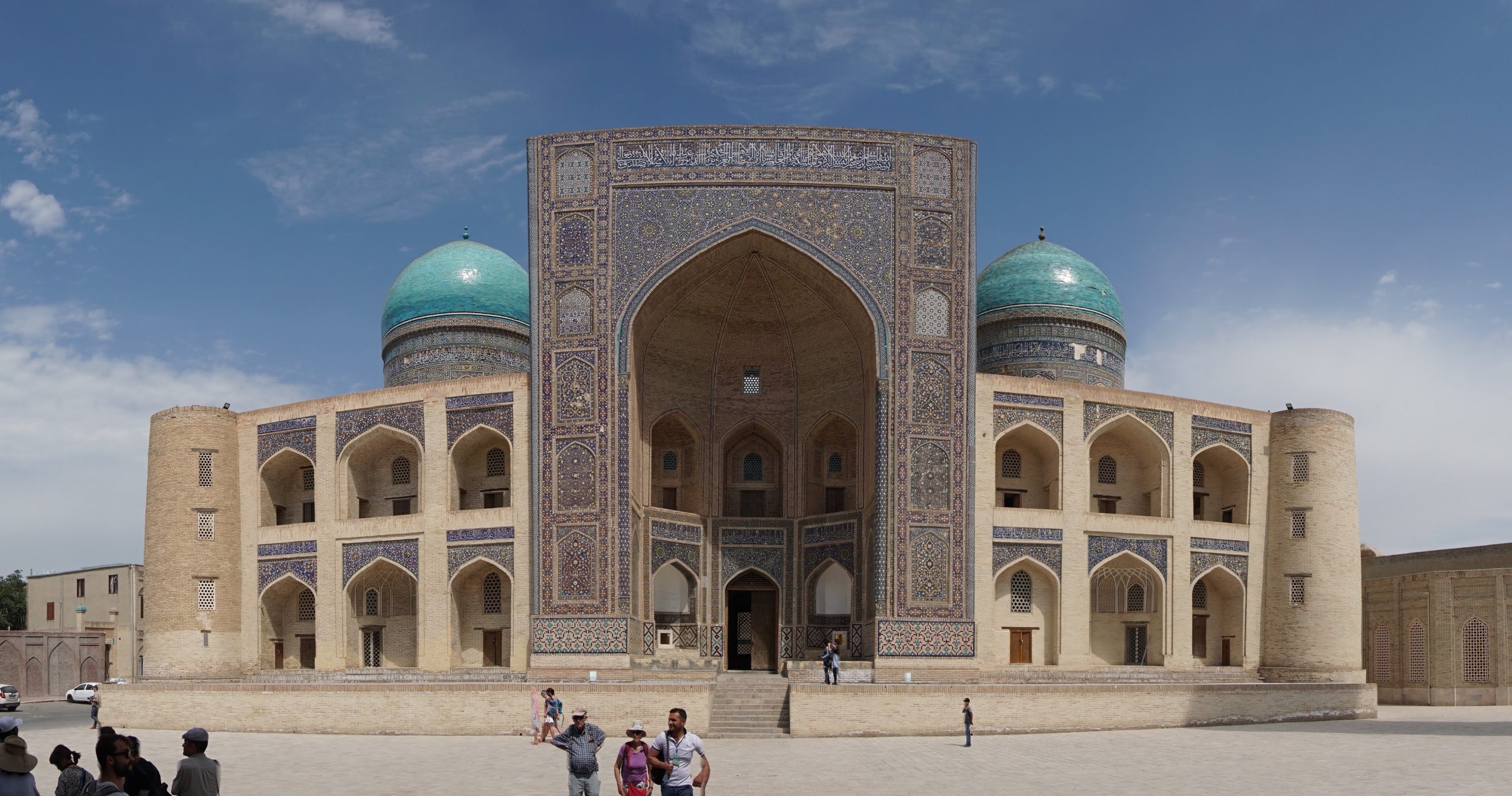


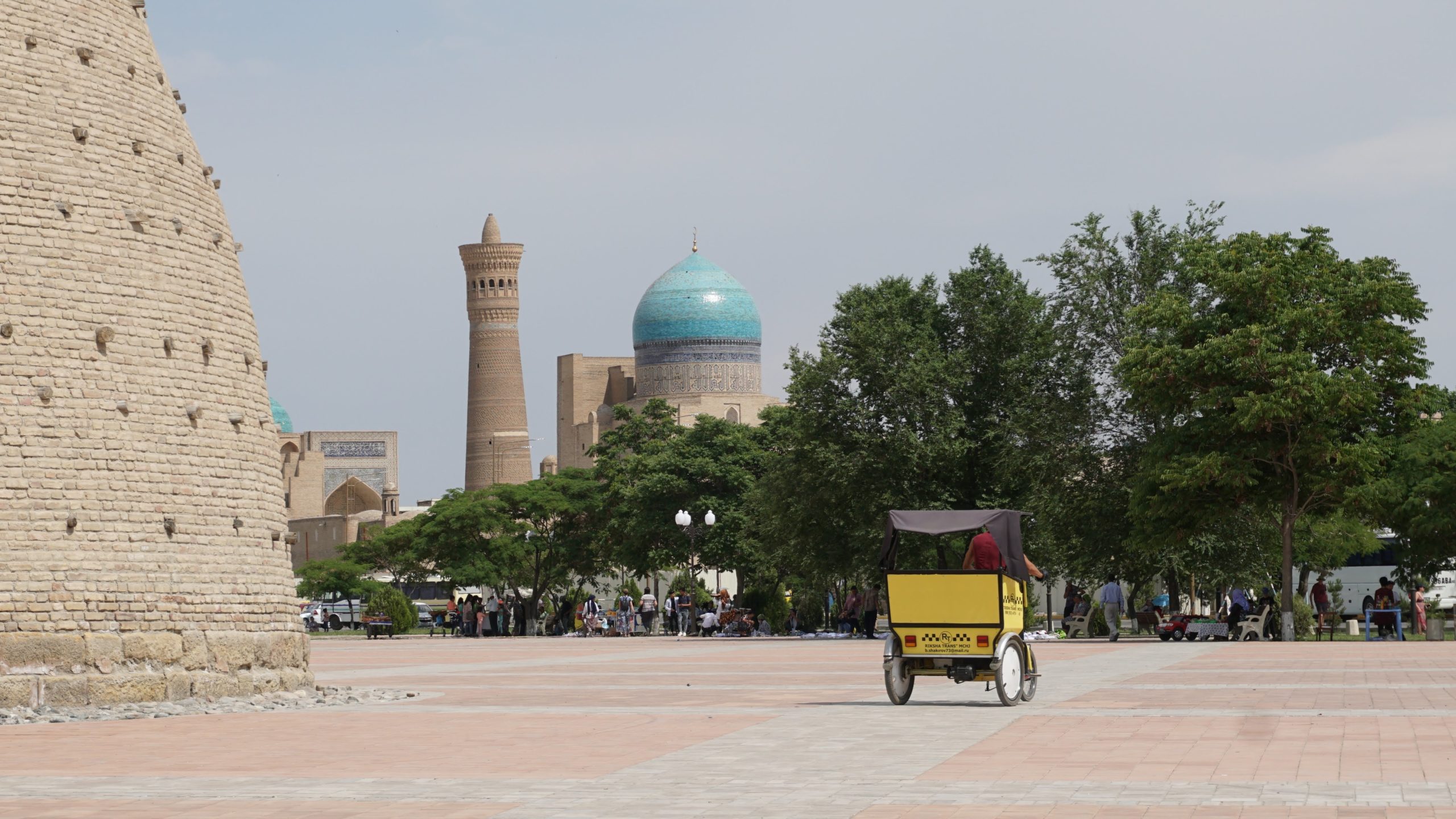
The city’s outskirts, as well as driving through the Uzbek countryside, partly restored my previous, naive impression of an underdeveloped country: People doing fieldwork by plow and donkey, unfortified roads, and deteriorated houses. Obviously, it will still need a lot of time before the country will catch up to the decently developed city centers and develop a national identity that is respecting its ancient history and representing the modern and open-minded country Uzbekistan is evolving to.
Despite all controversies arising around these restoration works, internet censorship, and liberty of speech issues, Uzbekistan has made great leaps in recent years, opening up and presenting itself as an attractive tourist destination: it’s coming in from the cold. This once again reminds me of the book Factfulness by Hans Rosling, which argues that there are no us ‘western’ countries and ‘them’ underdeveloped countries anymore. The gap is closing, and soon enough, countries previously thought of as “underdeveloped” will present themselves as equally developed emerging markets.
Never Stop Exploring
After the summer school, I went together with three other physicists on a trip to Zaamin national park and spent the last few days exploring remote tracks on the border with Tajikistan. It gave me another totally different yet refreshing impression of Uzbekistan, a country of largely unexplored natural beauty, which has not yet been subject to some tourism development plan.
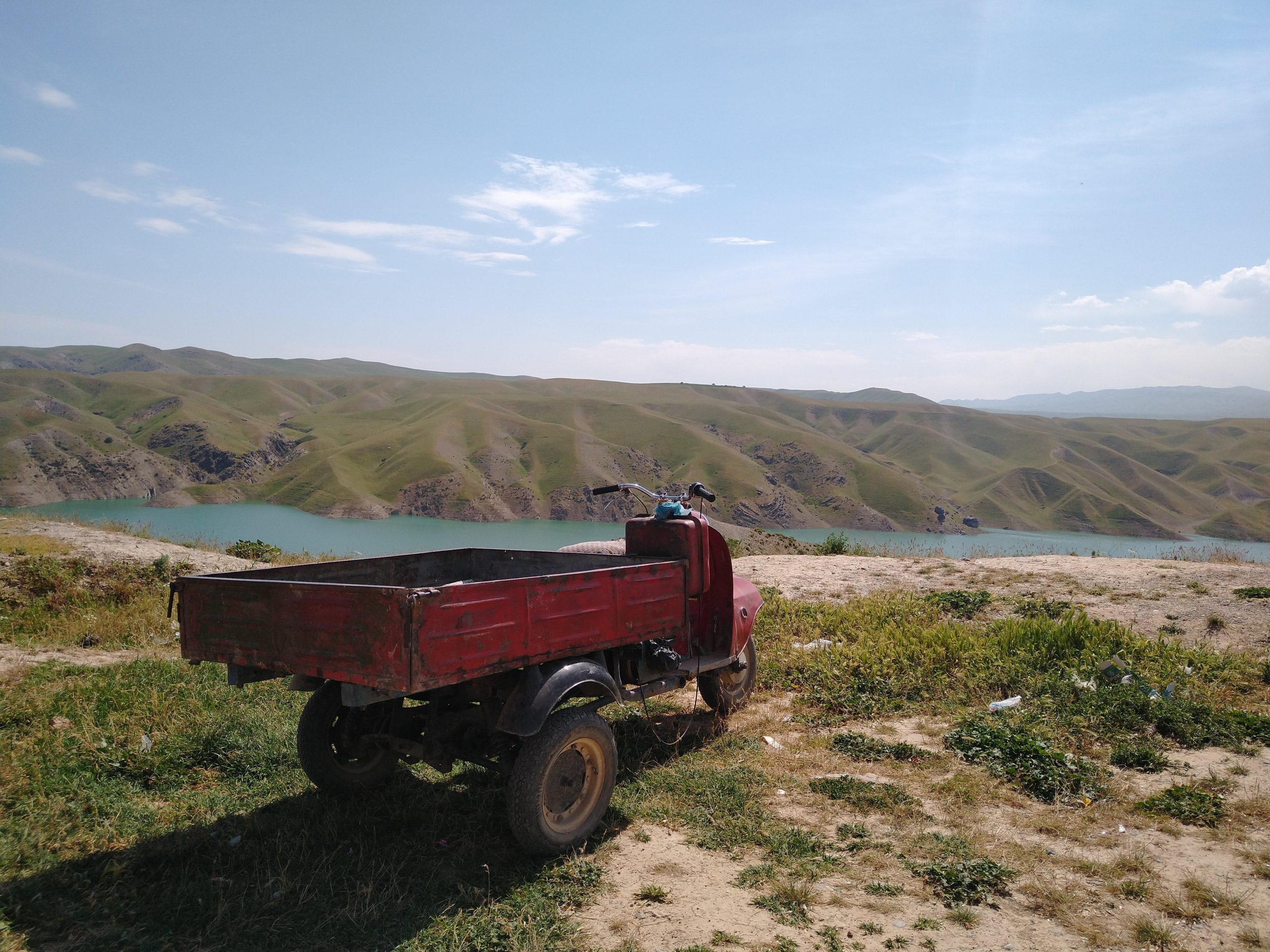


Annex: Customer Targeting inside the Madrasa
When Ulugh Beg Madrasa was built in 1420, it soon became one of the educational centers of Central Asia, attracting astronomers, mathematicians, and scholars from all over the Islamic world. Today it is one of the main tourist attractions in Samarkand. But maybe it’s due to this spirit of being a former educational institution that the madrasa hosted in May 2019 the ICTP summer school on advances in condensed matter physics, which I had the pleasure to attend.
While the morning and afternoon were filled with physics lectures, during lunch break, we had plenty of time to stroll through the madrasa, enjoying vistas from one of the minarets, admiring the beautiful ornaments — and passing by an innumerable amount of tourist shops on the go.
These tourist shops all basically looked the same. They all sold more or less the same tourist stuff, including shiny fridge magnets, wooden business card holders, and scarves of all different colors (surprisingly haven’t found any postcards). And when you stopped by, the owner would tell you the same story in broken English, that their magnets were the real ones and only their scarves were made from authentic silk.
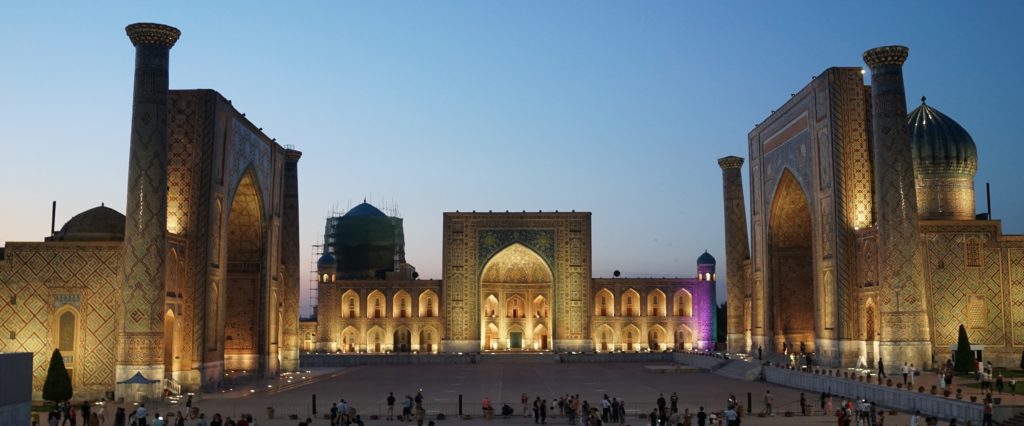
The impression of these shops grew familiar until I reached the Dil-Suzani Boutique. The shop was run by Dilshod, whom I heard even at some distance talking to his clients in decent English, seamlessly switching to French and then greeting me in German, once I had entered his shop and he had asked where I was from. This shop was truly different and unique on its own!
For more than ten years, Dilshod has been running the shop, and by now, the Dil-Suzani Boutique is well known for its high-quality embroideries. Someone passing by may have just thought he is selling some sort of funny carpets. But after talking to him, she would have learned that these were traditional Uzbek suzani and would share his passion for all the intricate little details and hidden meanings of their patterns. And eventually, pay a reasonable price to keep a suzani as her very special gift from Uzbekistan.
When running the shop for over ten years, Dilshod had come across people from all over the world. But unlike other shop owners, he really had to talk with the tourists, explaining the meaning of the embroideries and finally inspiring them to pay for them. Targeting a high quality — high price — low volume segment of customers, Dilshod had to engage with them a lot more, picking up words from so many languages and thus speaking English and many other foreign languages a lot better than the average shop owner. A hypothesis I tested soon after when visiting a real carpet shop and finding that the owner as well spoke decent English.
For the average tourist shop that sells the usual tourist stuff, it received from the same supplier, competition among the shops levels out any competitive advantages and thus price differences. The price quotes were still about ten times higher than what the locals would pay, but with some finesse, you could negotiate a reasonable price. And then there were no substantial differences in pricing among different shops. (Prices are generally low, compared to Germany, but you just don’t go to these shops or the bazaar without bargaining. That’s part of the game.)
Your shop will only receive special attention if your value proposition is significantly different from the shops surrounding you. And that is what needs to be addressed by your skill level and your strategy for customer targeting.
